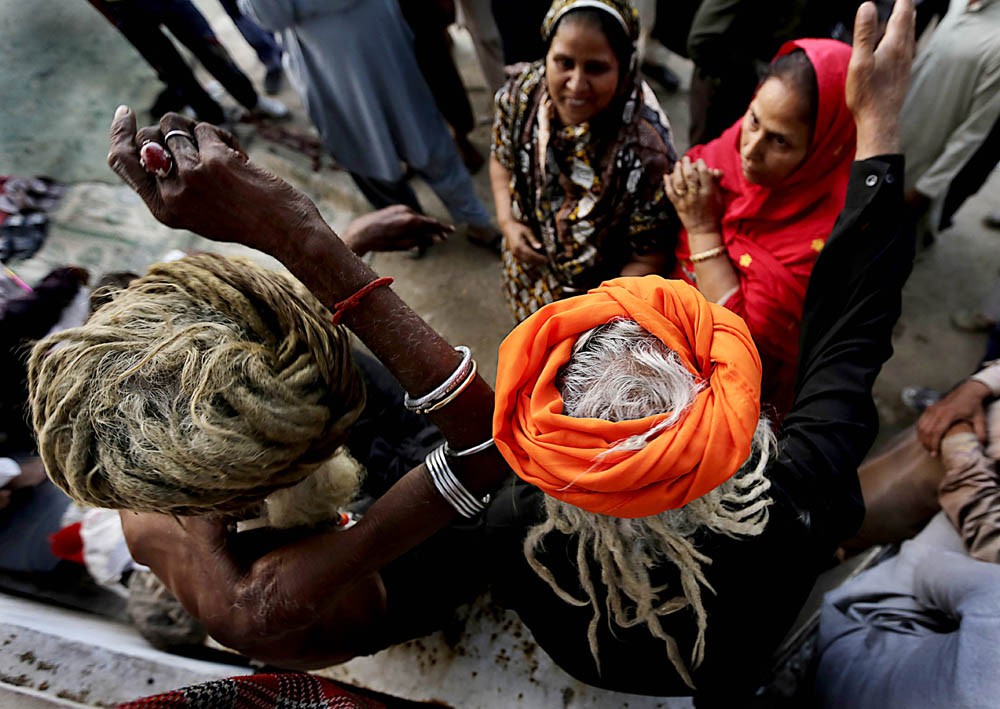
Witnessing a centuries old fire that burns the night away during one of our city’s more ancient festivals, Mela Chiraghan

This last Sunday a fire rose in Lahore with men, women and children around it. Bodies fell to the floor unconscious. The air was tinged with fanaticism of a deeply religious kind. I was there. I saw it.
And elsewhere in Lahore a more sinister fire broke out. This one too in a park, this one too affected women and children. The air there too was laced with fanaticism. Unlike the first, however, this second was the result of an act of sheer cowardice. Luckily, I was far from it, attending the Urs of Madho Lal Hussain in the heart of Baghbanpura. I was witness to a centuries old fire that burns the night away during one of our city’s more ancient festivals, Mela Chiraghan.
I saw faces of shy girls giggling in colourful dupattas. I could sense the feigned bravado of the young men smoking cheap cigarettes, while holding each other’s hands. I felt sweaty bodies brushing up against me as we all tried to catch a glimpse of dancing girls titillating the crowd from down below. These women (to my naïve eyes, these were women, though they were more likely khwaja saras) were but a prelude to the main act -- daring men that rode their motorcycles up the walls of the ‘well-of-death’.
There was a rickety Ferris wheel, a dusty trampoline, the smell of fried foods, and the sound of life around me. You stepped behind a curtain to find a freak-show of that most atavistic kind. Only thirty rupees to see miracles before your eyes -- mermaids dancing in a small box of artificially blue water, cut up heads of small boys with painted faces and indigent expressions.
And then there was the muffled sound of numerous drums that forced your feet towards the shrine itself. Up a small flight of stairs, and there before you was the fanaticism earlier alluded to. Young boys with oily hair and kohl-lined eyes danced with old men with bedraggled locks and otherworldly distance in their eyes. Two men fell unconscious to the floor from what could only have been the result of a deep trance.
Women sat in a corner tying the marble latticework with strings, while others sat along the colonnades and lit lamps and beat their chests ever so lightly. Further into the complex those more advanced in age were dancing too, not afraid of the many cameras that turned in their direction. There was even one who seemed to hold a status of sanctity as she sat under a tent wearing a turban while a group of gaunt looking men sat around her awaiting her instruction.
And then there was the fire, a large cauldron that seemingly burned endlessly. Dervishes in black tunics and beads in their hair carried earthenware pots with oil in them. I saw fathers wetting their hands in the oil and applying it to their sons’ heads for good fortune. I saw men praying before the fire and inviting its grey fumes to wrap around their bodies. It may not have been worship, but there was palpable devotion in all those around the fire. Many an old tree had been sacrificed as all around the rather large complex fires were being lit.
Food was being prepared, garlands of bright yellow flowers passed around, petals showered, and bodies sold to the music in the air.
And all this for a saint who took to a young Brahman boy from Shahdara centuries ago, so much so that he took his name for his own. Shah Hussain, as books on Punjabi Sufi poetry remember him, in this city takes the Hindu name of Hazrat Madho Lal Hussain. Lal, for the colour of his dress; Madho, for that was the name of the devotee whom he held with special affection.
And strangely enough, I got the sense that this was a truly secular occasion. Not that it was devoid of religion, far from it, but that it was accepting of any and all. That here in a country of a vast Muslim majority there were thousands present to pay their respects to a saint, who was Muslim himself but proudly carried a Hindu name.
The hue of nostalgia for Lahore’s secular past was present in the beat of the drums, and visible in the smoke that rose from that ancient fire.
Afterwards I could not help but see in the faces of all those at the Mela the faces of those gathered yonder in that other park, where that other fire broke out. And the vivid images of dancing dervishes and entranced women that I had left with in my mind dimmed just a bit.
I understand now that Nero could have been wrongfully derided by history. Perhaps like him we too must play the flute and the dhol, not in dejection while our city burns, but rather in the face of it. To show those who wish to besiege it with terror that the fire within us is strong and loud, and will burn like it has for centuries past, till all the darkness dies.